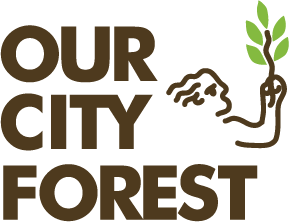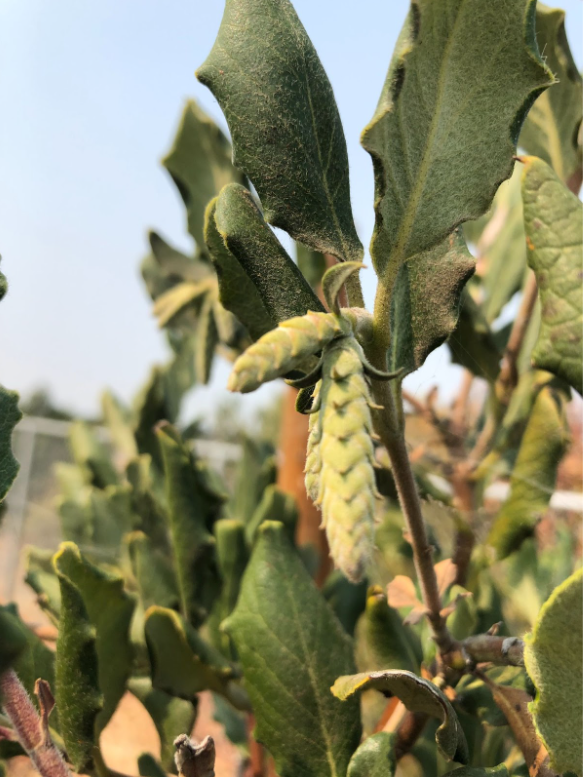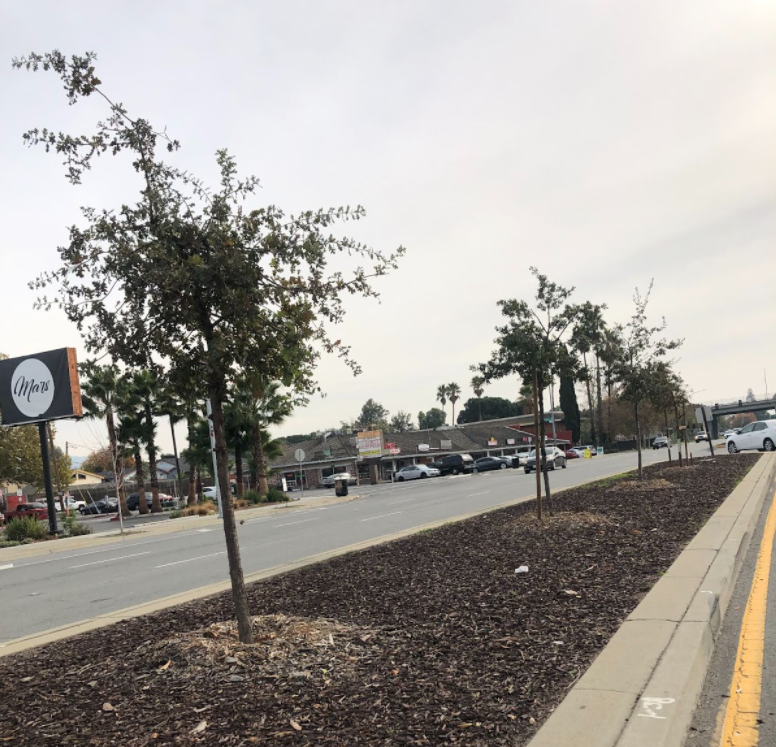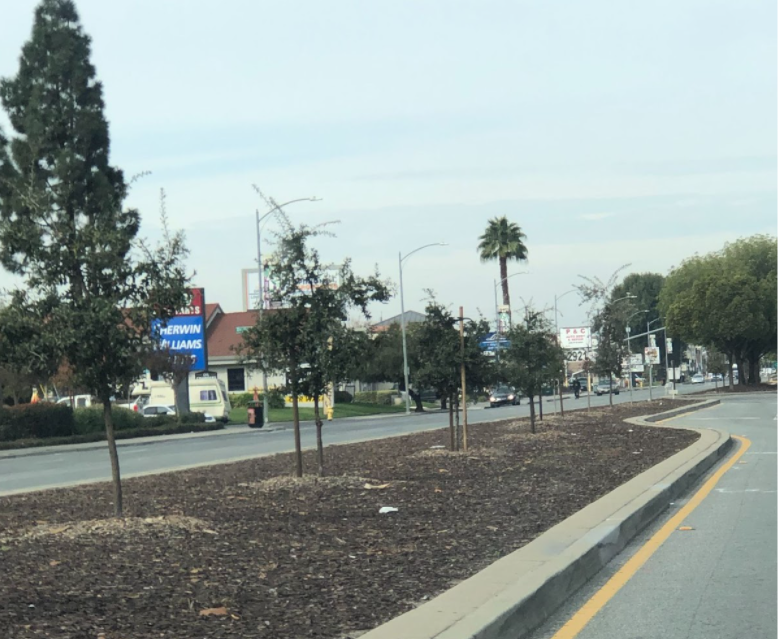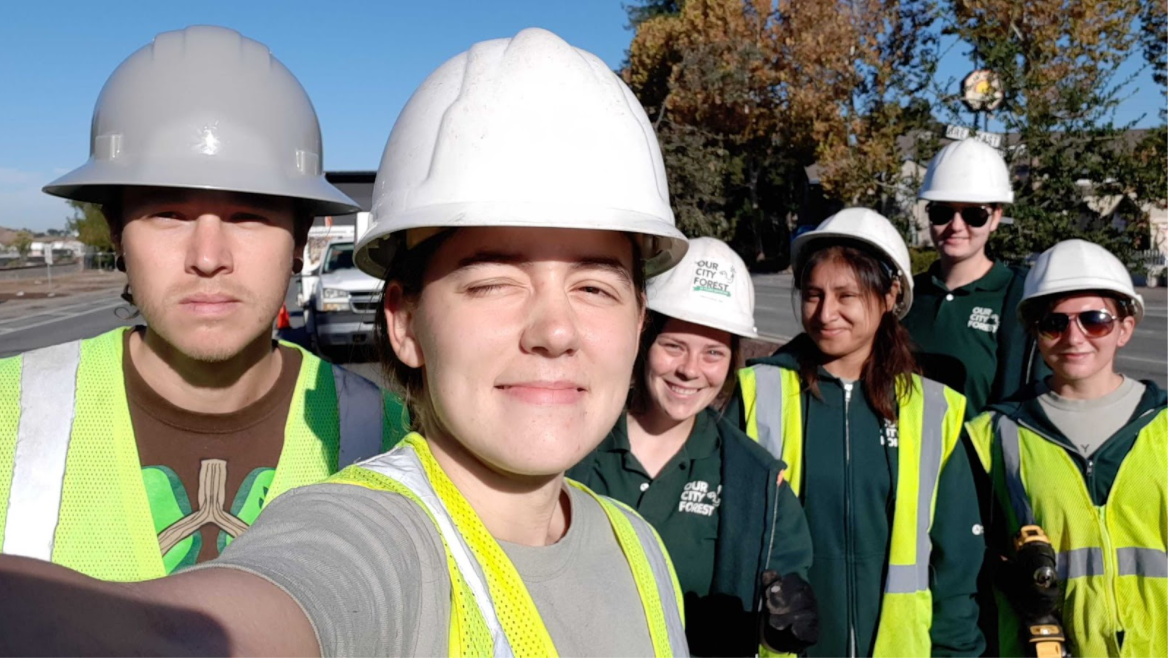As the weather heats up in Santa Clara County it is crutial to stay on top of watering your tree. Young trees need water to grow healthy and be less susceptible to pests and diseases. It does not matter how drought tolerant or native the species is, all young and newly planted trees need 15-20 gallons of water a week. Our City Forest recommends watering your tree all at once to promote deep root watering.
How to Water
The best way to water your tree is to use your hose and leave it on a drip (or very slow flow) for an hour, moving the hose around every hour to different areas of the root zone. This allows the water to percolate the soil slowly which allows time for the roots to absorb the moisture. Newly planted trees have a small root network so the roots will be closer to the trunk of the tree. The older the tree gets the root network will expand and watering will need to move away from the trunk of the tree. Mature trees should be watered at the drip line, where the canopy ends.
A berm can also be built to help water a tree. A berm is a basin constructed around a tree using dirt and mulch. The berm’s purpose is to hold water to make it easier for the tree to get water. Fill the berm up with water from a hose and it will slowly percolate the ground. Trees can also be watered using 5-gallon buckets if a hose cannot reach a tree’s location. Use a shovel to break the water flow so a hole does not form where the water is being poured. Just makre sure the young tree is getting 15-20 gallons of water.
Also, watch how fast the water is draining. If the water is draining very gast, then the soil has fast drainage and extra water is needed for the tree. If the water is staying in the berm for a long time, then the soil likely has bad drainage. Checking soil moisture is encouraged especially during heat waves. To check soil moisture, use your finger and dig down 4inches below the soil about 1-2ft away from the trunk of a young tree. Mature trees check 6-12inches deep. If the soil is dry, then the tree can be watered. If the soil is still moist then only water the tree once a week. Roots need to breathe and too much water can drown the tree. The soil should be moist after watering, not waterlogged.
Why is it important?
Newly planted trees can experience transplant shock. The tree has grown up in a pot and when it is planted in the ground, it is the most stressful event in the tree’s life. The tree’s environment has changed, and it is up to the human to help the tree adapt to its new forever home. There are many things that can cause transplant shorck including: improper planting, lack of root system, weather, pest, and disease, but imporper watering is what will be focused on below.
If a tree is not getting enough water to support photosynthesis within the tree, then tree growth can be stunted. If the tree does not get more water over time, then the tree will slowly die. The root system of a tree can also die back as the tree tries to conserve nutrients. The tree can show signs of underwatering in different ways:
No new leaves
Short branches or branches stop growing
Leaves changing color (before fall)
Leaves turning brown
Leaves feeling crispy on tree
Smaller leaves than normal
Crown dieback/thinning canopy
If caught early enough a tree can recover from underwatering. Consistent watering can help the tree recover. Make sure the soil is kept moist. Mulch is recommended to put on top of exposed soil. The sun will hit the mulch instead of the soil allowing the soil to stay moist for longer periods of time. The mulch will also prevent evaporation.
If a tree is being watered by a sprinkler, then this can also lead to underwatering. A sprinkler only wets the top layer of soil, and the water will not penetrate deep enough to where the tree roots are. Watering by hose is recommended. Most tree roots are in the top 6 to 24inches of soil which means water needs to be able to percolate down which cannot be achieved through a sprinkler. Competing grass should also be removed from a tree’s critical root zone to avoid competition for water.
Trees can also experience overwatering. Many trees, especially ones that do well in California cannot tolerate excessive moisture. Tree roots need oxygen in the soil and excess water causes roots not to be able to absorb water. Symptoms of an over watered tree:
Yellow, moist leaves
Wilting leaves
Leaf scorch
Early leaf drop
Crown dieback
This is why it is important to watch how fast your soil drains. Everyone’s soil is different and typically the more clay in the soil the slower it drains. Santa Clara County does have a lot of clay in the soil, but the soil is usually classified as clay loam. When clay is very wet it expands and swells, it is usually a sticky texture, and when clay is dry it shrinks and compacts causing soil to crack. However, clay loam is easier to work with and you can use mulch to keep the soil moist.
What to remember
Keeping your young tree properly watered during the summer will set the tree up for success. It is also important to makre sure mature trees have enough water especially during drought conditions. Many trees in California adapt to the Mediterranean Climate, dry summers & wet winters. However, in drought years or years with low rainfall, mature trees need to be watered. Remember, younger trees need consistent watering for at least the first 5 years after planting. If a tree is planted in the summer, makre sure the tree is diligently watered and check soil moisture every 2-3 days. During heat waves check soil moisture of all tree, mature and young, every couple of days because trees usually need twice as much water. The best time of the day to water your tree is either in the morening or at night when the weather is cooler as less evaporation will take place. Check out our Watering Guide.
